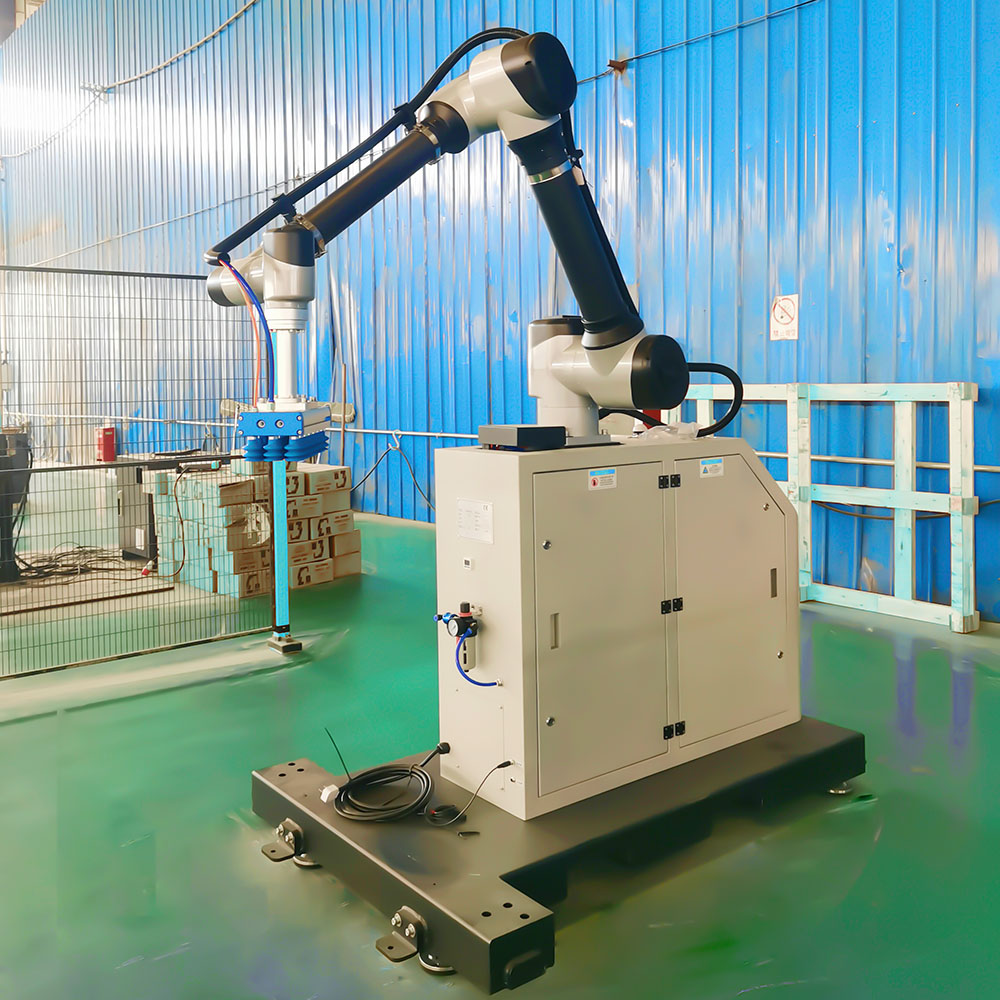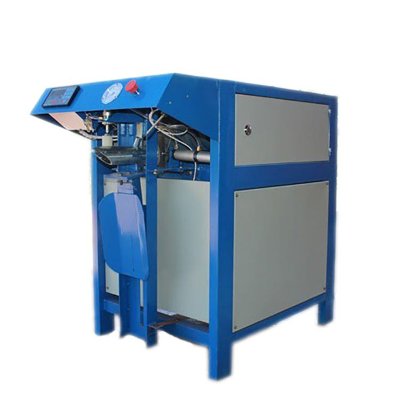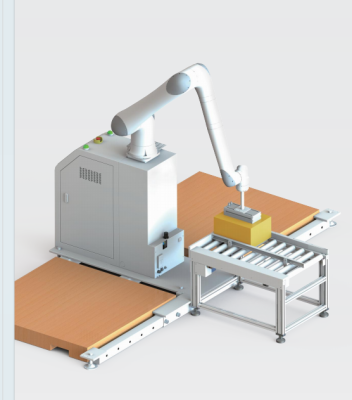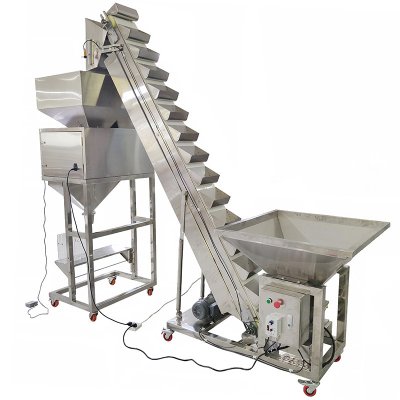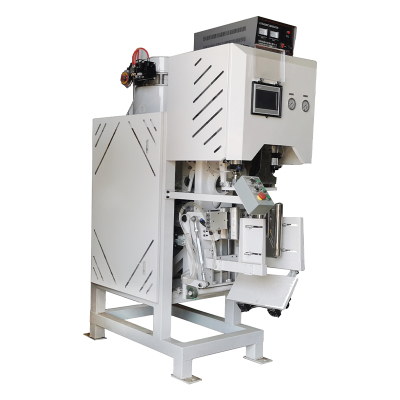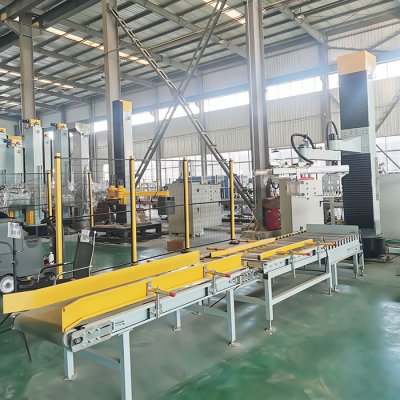carton case cobot palletizier
Collaborative Palletizing Robot is a new type of automation equipment that combines traditional industrial palletizing robots and collaborative robot (Cobot) technology. It is designed for logistics, warehousing, production lines and other scenarios. It can share workspace with human workers to achieve efficient and flexible cargo stacking (palletizing) operations. The following are its core features, applications and technical analysis:
Typical application scenarios
Logistics warehousing
E-commerce sorting center, express package stacking, support random palletizing of mixed SKU (boxes of different sizes).
Food and beverage
High-speed palletizing of regular items such as boxed mineral water and canned food, in line with hygiene standards (waterproof and dustproof design).
Chemical industry
Stacking of bagged powders and barreled liquids, corrosion-resistant materials are optional (such as stainless steel body).
End of production line
Linked with conveyor belts and packaging machines to complete automatic stacking of finished products to pallets.
Collaborative Palletizing Robot is a new type of automation equipment that combines traditional industrial palletizing robots and collaborative robots (Cobot) technology. It is designed for logistics, warehousing, production lines and other scenarios. It can share workspace with human workers to achieve efficient and flexible cargo stacking (palletizing) operations. The following are its core features, applications and technical analysis:
1. Core features
Human-machine collaboration (HRC)
Through force sensors, visual systems or safety skin technology, it detects the surrounding environment in real time, and can automatically stop or slow down in case of collision to ensure the safety of human-machine collaboration (in compliance with ISO/TS 15066 standards).
Flexible deployment
Lightweight design, support for mobile installation (such as AGV integration), no need for fixed fences, and adapt to the needs of multi-variety and small batch production.
Easy programming
Graphical interface (such as drag-and-drop teaching), offline programming or AI learning, reduce the operating threshold, and non-professionals can also quickly adjust tasks.
High adaptability
Equipped with 3D vision or deep learning algorithms, it can identify boxes/bags of different sizes and shapes and automatically plan palletizing paths.
2. Typical application scenarios
Logistics warehousing
E-commerce sorting center, express parcel stacking, support random stacking of mixed SKU (boxes of different sizes).
Food and beverage
High-speed stacking of regular items such as boxed mineral water and canned goods, in line with hygiene standards (waterproof and dustproof design).
Chemical industry
Stacking of bagged powders and barreled liquids, corrosion-resistant materials are optional (such as stainless steel body).
End of production line
Linked with conveyor belts and packaging machines to complete automatic stacking of finished products on pallets.
3. Key technical components
Technical module Functional description
Robot structure Usually 4-axis (SCARA) or 6-axis articulated type, load 5-50kg, repeat positioning accuracy within ±0.1mm.
End effector Suction cup fixture (for flat boxes), mechanical gripper (irregular objects), magnetic fixture (metal container).
Vision system 3D camera + AI algorithm To realize cargo positioning, posture recognition and pallet vacancy detection.
Safety system Force control feedback, emergency stop button, regional grating to ensure zero risk of human-machine interaction.
Communication interface Support PLC, MES, WMS system docking to achieve data interconnection (such as pallet information upload).

